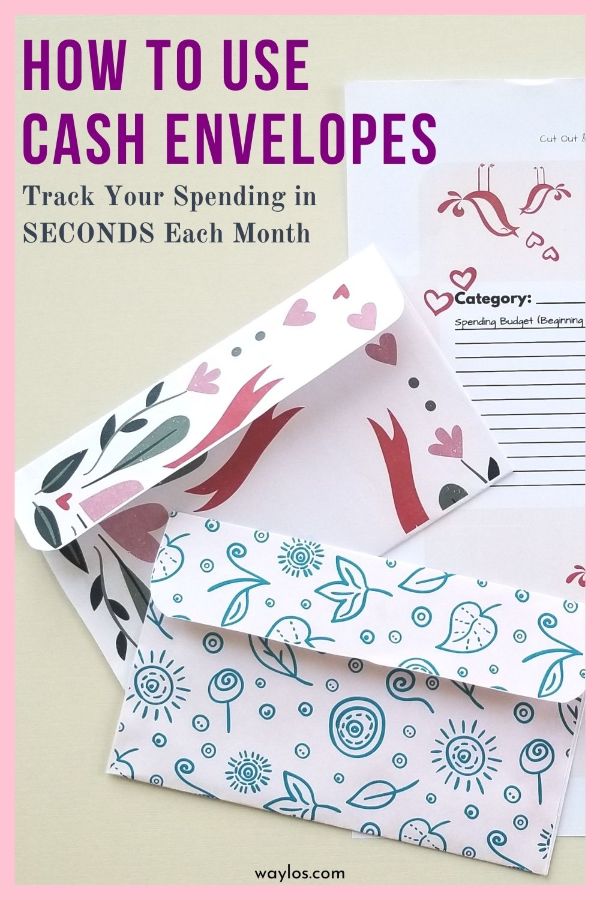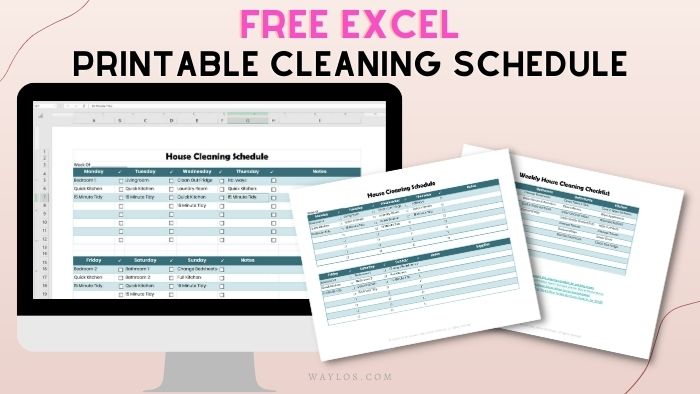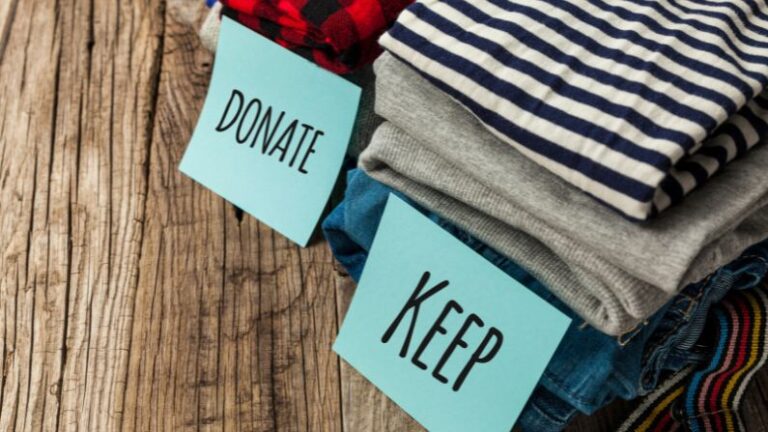How to Make Cash Envelopes: Track Your Spending In SECONDS Every Month
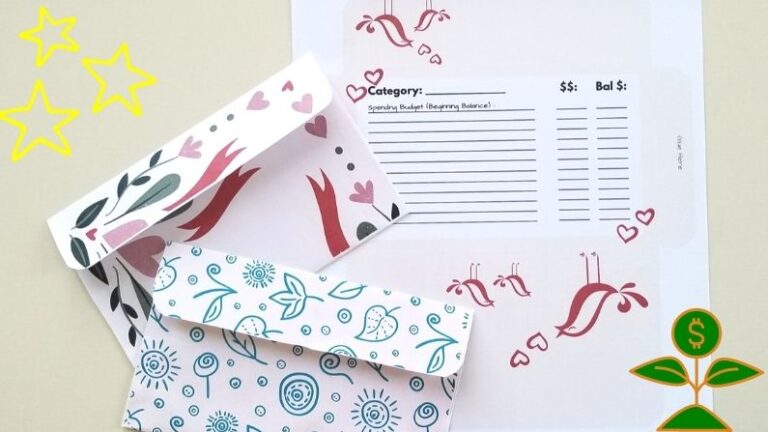
I have an AWESOME financial shortcut for you today, and it is going to save you a TON of time going through your budget and tracking your family spending each month.
It’s my hack for tracking your spending in SECONDS every month!
I’m showing you the secret to my Cash Envelope system, plus how to make cash envelopes with just regular paper.
Here’s Why You Need a Cash Envelope System….
Oh, budgeting. We all have to do it, it’s a pain in the butt, and we all don’t really do it when we’re really supposed to, right?
Here’s the deal: There are TWO parts to monthly budgeting…
- Writing out what you are planning to spend at the beginning of each month, and
- Figuring out what you ACTUALLY spent at the end of each month.
That second half is where EVERYBODY gets tripped up.
We put it off for later, or don’t do it at all, because it means going through every single bank and credit card statement…
with a calculator…
for every category of expenses that you are tracking.
It SUCKS. It’s tedious and annoying, and frustrating when you didn’t keep the receipt & can’t remember what you bought to put into the correct category.
Even when you have a budgeting app (I use Mint), the app rarely puts the entries in the right category, and you still have to review and split the entries by hand.
BUT, I have a solution, and it’s these guys right here:
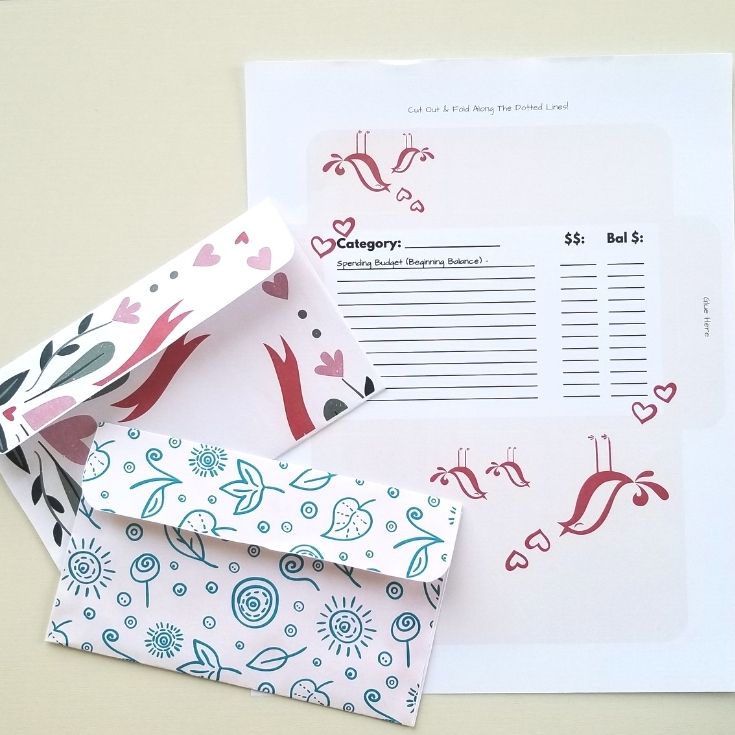
This is my cash envelope system. It consists of literally pieces of paper that I printed out and folded into envelopes.
It took me 2 minutes, and I show you how in the video below (starting at the 1:29 mark).
Now, just sticking a bunch of dollar bills in envelopes doesn’t help you keep track of your spending…
THESE cash envelopes have a spending tracker right smack on the envelope:

These cash envelopes make keeping track of your spending SUPER easy. Whether you use cash or you use cards, you can still use this method.
Cash Envelopes Are Great for Tracking Your Variable Expenses
A very common question is, what cash envelopes should I have? How many is enough? And, what are the right categories?
Your Cash Envelope System Categories are basically going to be your “variable” expenses. These are the expenses that change month-to-month, and can include:
- Groceries
- Toiletries & household Items
- Gas for your car
- Restaurants/Ordering takeout
- Toys
- Entertainment (Renting movies,
- Gifts
- Clothing
- Car repairs and upkeep/maintenance* (see the next section)
- Home repairs and upkeep/maintenance* (see the next section)
Do Utilities Count as Variable Expenses for Your Cash Envelopes?
Some people also include utilities (like gas/heat and electricity), and car or house repairs/maintenance, in the “variable expenses” category. This is because the bills for these also usually change month-to-month. However, I prefer not to do this.
Instead, I treat my utilities like I would treat a fixed expense, because they are bills that come once a month and absolutely have to be paid before anything else.
So, when I set up my budget for the month, I pay my utilities along with my other fixed expenses (for example rent/mortgage, TV/Internet, car payment, minimum credit card payments, etc), and use the money that is left over for my variable expenses.
For car and home maintenance, I use “sinking funds” to save up for these, since I don’t know when they are coming and saving a little bit throughout the year will give us a cushion for when these things inevitably happen.
You can definitely use these cash envelopes to hold your sinking funds!
Related: Free Budget Binder Printables
How to Make Cash Envelopes
It’s very easy to make your own cash envelopes, and I have cute and fun templates in my Etsy shop for you to simply cut, fold and glue!
The step-by-step instructions are below.
If you are a more visual learner, here is my video all about how to make these envelopes and use them to track your spending in seconds each month. Making the envelope starts at the 1:29 mark:
My Premium Budget Printables come with one cash envelope template, but there are a few really cute designs in my Etsy shop, you get EIGHT cash envelope templates for only $3:
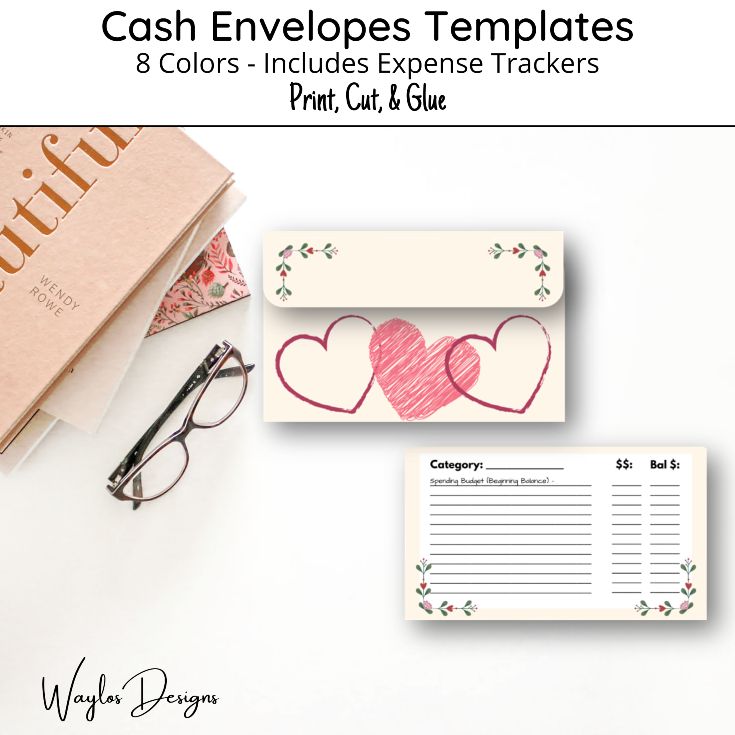
Here Are the Steps For How to Make Cash Envelopes…
Step 1: Cut out your cash envelope template:

Step 2: Fold along the dotted lines:
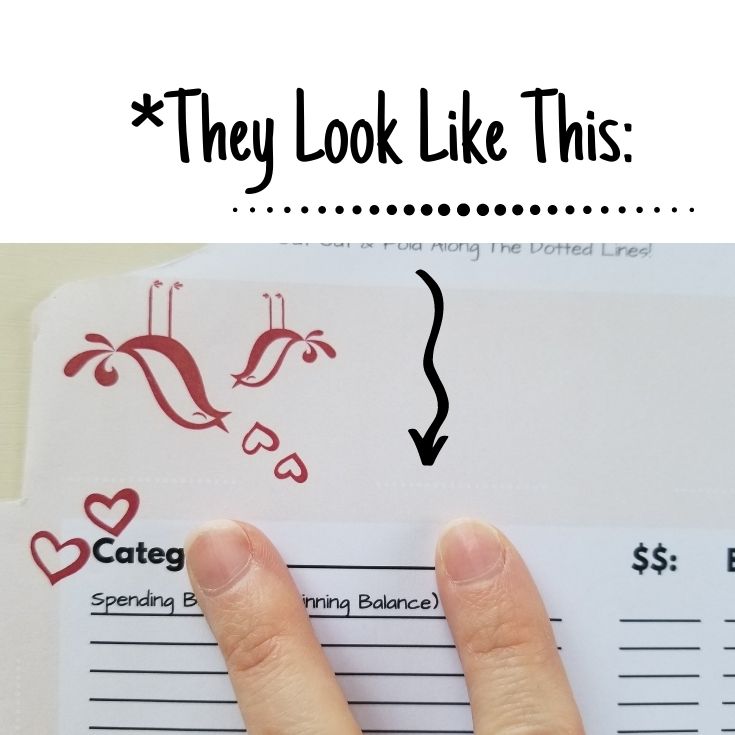
Step 3: Put some glue (or even better, a strip of double-sided tape if you have it) along the side tabs:
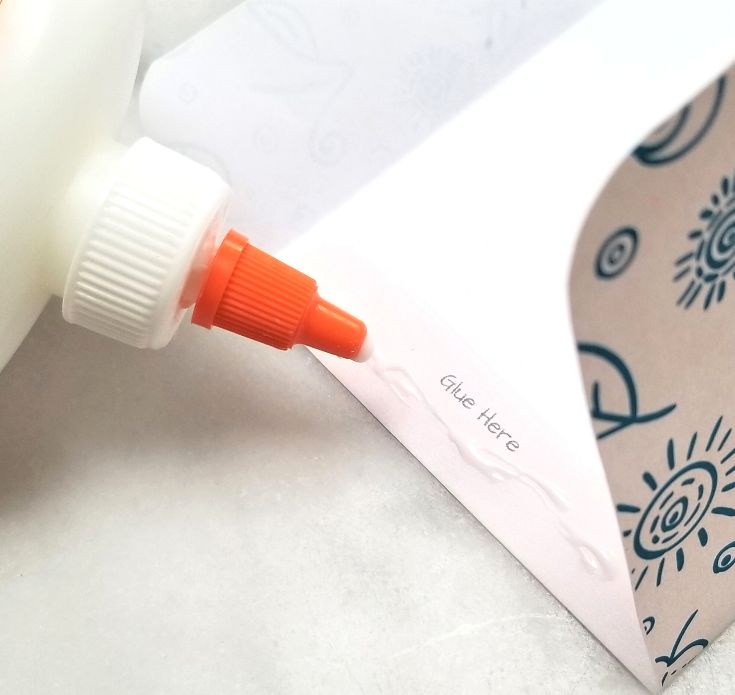
Step 4: Fold the BIG side over onto the glue tabs, and press to stick.

That’s it! Super-easy and now you have your own cash envelope with a built-in spending tracker.

Some people like to use a laminator, but because I use spending trackers on my actual envelopes, I don’t use a laminator. Instead, I can use pencil or erasable pens if I want to reuse them for more months.
A heavier weight paper like 24lb or 28lb weight will definitely hold up for a few months, and then I like to change up the design of the envelope to keep with the seasons. It’s an easy way to make the expense tracking process more fun for me.
Free DIY Cash Envelope Option:
An easy and free DIY option for some cash envelopes is to just use the free envelopes that come with your bills, if you usually pay your bills online. Then. you won’t have to recycle them!
You can handwrite your categories, spending and balances on the back of the envelope, using the method I’ll be showing you next.
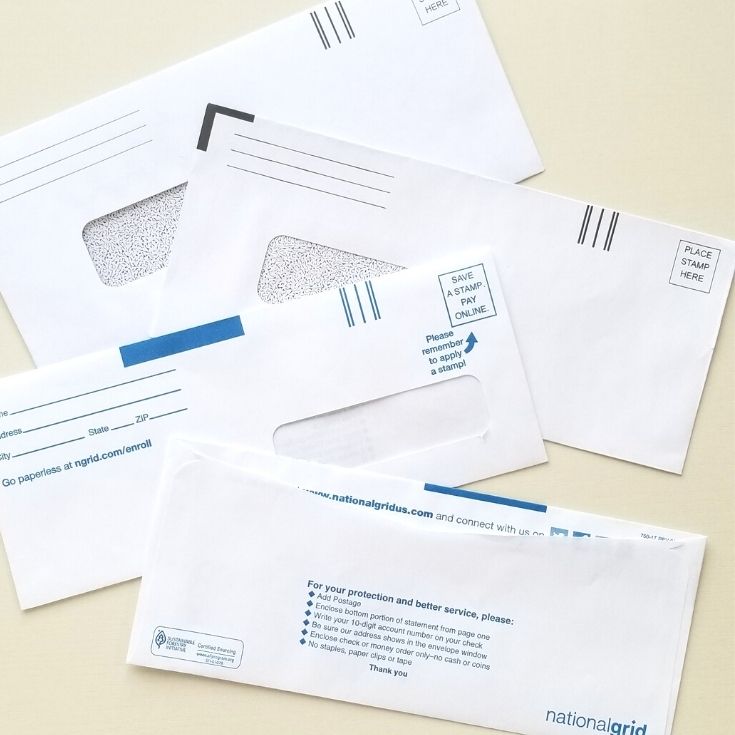
How to Use Cash Envelopes
And now for the fun part………kidding.
But, it’s a lot more fun than spending all day combing through bank statements once a month!
The methods are very similar whether you are using cash or cashless (credit/debit card) spending, and I’ll go through each option here:
For Cash Spending:
- Pick your categories. You can skim through my list above if you are having trouble coming up with your categories.
- Label your envelopes. Write the category name on the first line of each cash envelope.
- Set Your budget for each category. If you have been budgeting for a while, good for you! You probably have a good idea of what you spend in each category each month.
If not, no problem at all! The fastest way to estimate your spending is to download a free app like Mint or Personal Capital. You will link all of your accounts to the app, and it automatically categorizes your spending for you.
Now, the categories will NOT be totally accurate, but that’s okay for now, since you just need an estimate to start with.
4. Fill your envelopes with the money you’ve budgeted for each expense category. Use the first line on the envelope to write in your beginning balance.
5. As you shop and use the cash, write down what you purchased, the amount, and how much is left over in the envelope.
6. I suggest that you keep receipts in the envelope as well!
For Cashless Spending (with credit or debit cards, etc.)
It’s actually very easy to do the envelope system without cash! The only difference between the cash and cashless spending is number 4…..
4. As you shop and use your credit cards, write down what you purchased, the amount, and how much is left over in your budget.
Put each receipt in the envelope, to keep track of your spending!
Different Ways to Organize Your Cash Envelopes
There are a few ways to hold on to, and organize, your cash envelopes:
Keep Them in Your Wallet. If your wallet is big enough to house your cash envelopes, and closes securely, this is a great option if you want to keep all of your envelopes together, all the time.
Use a Cash Envelope Binder. These guys are very cute, and hold all of your envelopes together with binder rings. You’ll have to punch small holes into your cash envelopes to keep them securely in your binder.
There are plenty on Amazon, in craft places like Hobby Lobby, or on Etsy:
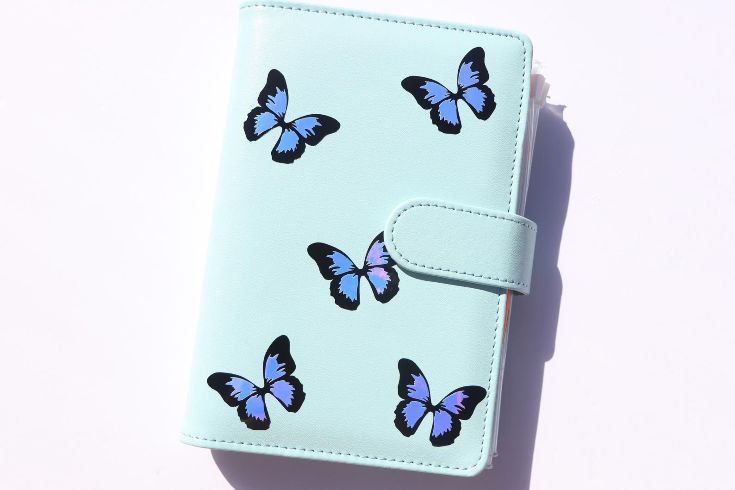
Keep a Cash Envelope Organizer at Home. You don’t HAVE To keep every single envelope with you. In fact, if you are using cash, that’s a lot of money to have on you! God forbid your car gets stolen or something worse happens, and you lose all that money.
You can use a small mail holder or rectangular pencil holder, or even just a binder clip to keep in your desk, and only take the cash envelopes with you that you will need for that shopping trip.
When You Hit Your Spending Limit in a Cash Envelope Category:
If you run out of money in an envelope category before the month is over, you have a few options. You can:
- Borrow from another envelope that has some extra money,
- Stop spending in that category no matter what, or
- Take some money from savings to cover the rest of the month, if the spending is truly necessary.
I DO NOT want you to increase your credit card spending if you can’t pay your bill in full for the month. Credit card interest is an expense you do NOT need to have in your life.
Whatever you decide to do (borrow from another envelope, or stop spending in that category), you should consider increasing your budget for that category next month, especially if the extra spending was necessary and reasonable.
This Cash Envelope System Helps You With Your Budgeting in Two Ways.
First, you’ll always know how much money is left in your budget for that category in real time, at ANY time in the month.
Second, at the end of the month you’ll know EXACTLY how much you spent in each budget category the SECOND the month is over, WITHOUT having to go through any receipts, credit card statements, or bank statements, trying to remember what you bought and which category it goes in.
It’s all done for you already!
When the Month is Over, It’s Time to Reconcile Your Budget
Reconciling your budget means you compare what you wanted to spend at the beginning of the month, with what you actually spent at the end of the month.
And guess what?? YOU ALREADY KNOW EXACTLY WHAT YOU SPENT IN EVERY SINGLE SPENDING CATEGORY because you are using my awesome cash envelopes!
I used to spend HOURS every month tracking my spending,
listing out each category,
trying to remember what was food, what was a work expense.
It took FOREVER at the end of the month, and now it takes SECONDS.
What To Do With The Extra Money in Your Cash Envelopes (or what to do if you ran out of money):
If you hit your spending limit early in a certain category, consider giving more money to his category next month. Think about your budgeting goals in general and whether you would want to reduce your savings, or move some money over from a different category.
If you find yourself with a lot of extra money in a few categories, any unspent money can go into savings, or if you ran out of money in a different category you can adjust your budget next month to move money into that category.
What Size is a Cash Envelope? The Minimum Size of a Cash Envelope Should Be About 6.5 in. x 3.8 in. Folded
You want to be able to fit both dollar bills AND receipts for a month into your cash envelope. (For example, if you go grocery shopping once a week, you’ll have four triple-folded receipts, plus cash).
My cash envelopes are the perfect size (about 6.5 in wide x 3.8 in tall when folded) to keep both cash and receipts in one place:
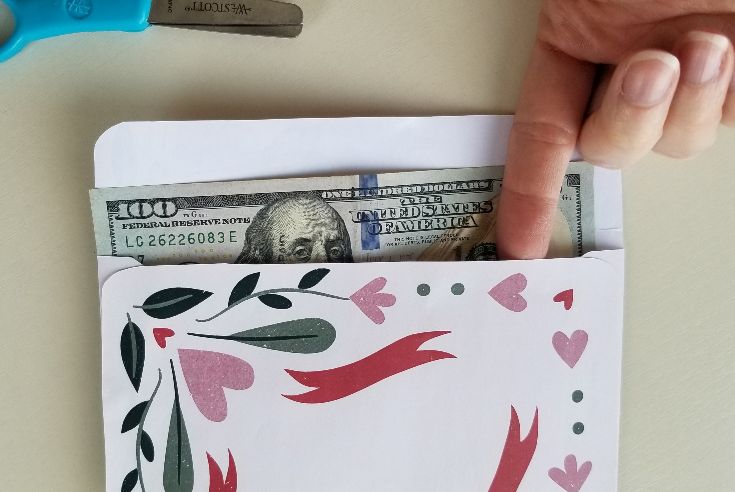
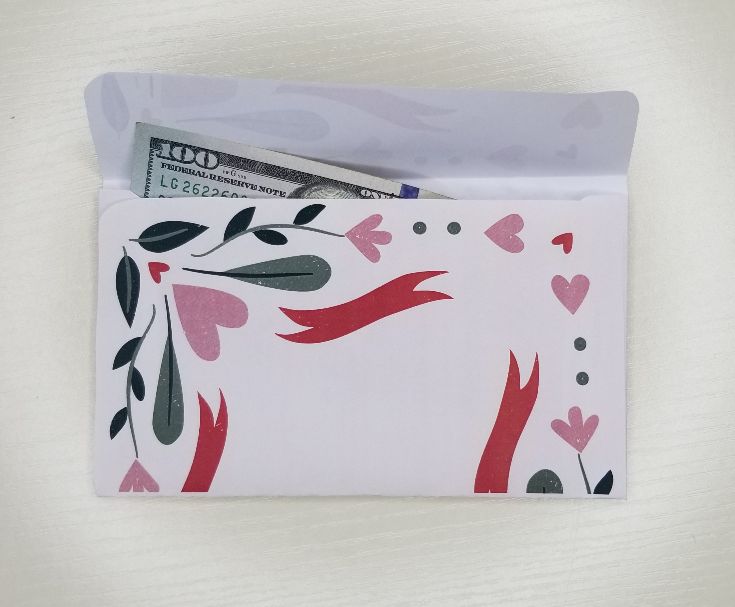
How Do You Make Clear Cash Envelopes?
I have no idea why anyone would want to do this (I don’t want people seeing inside my envelopes when I pull them out at the store). But, this seems to be a pretty common question, so I found a really great & easy tutorial here for you to make your own clear cash envelopes with tabs, should you want to do so.
Track Your Spending in Seconds Each Month with These Cash Envelopes!
Learning how to make cash envelopes is SO easy, and it makes reconciling your budget at the end of the month take SECONDS instead of hours!
I truly hope you try my cash envelope templates (they are only $3 for a set of eight) and see how much time and annoyance it saves you every month.

XO,
Mina
PS: Here are some other posts you may find useful:
- Free Budget Binder Printables
- Try These Personal Finance Books to Start the Year Off Right
- The Simple, Best Bill Organizing System that Really Works!
